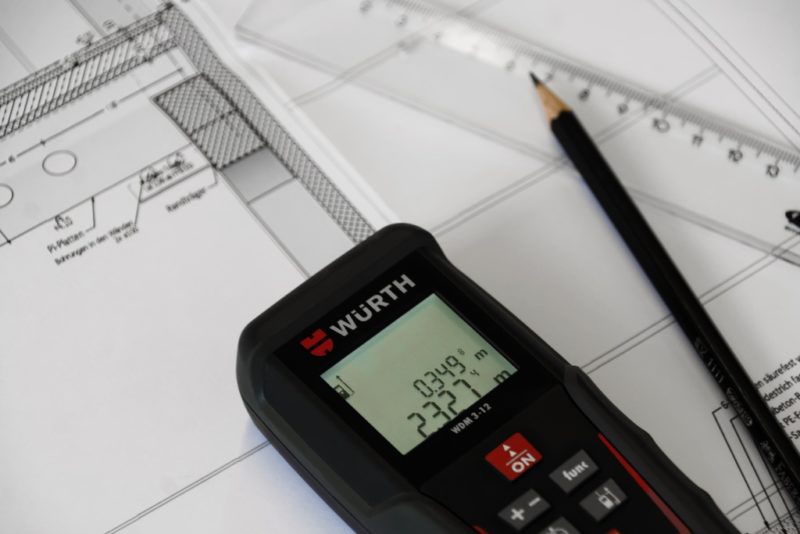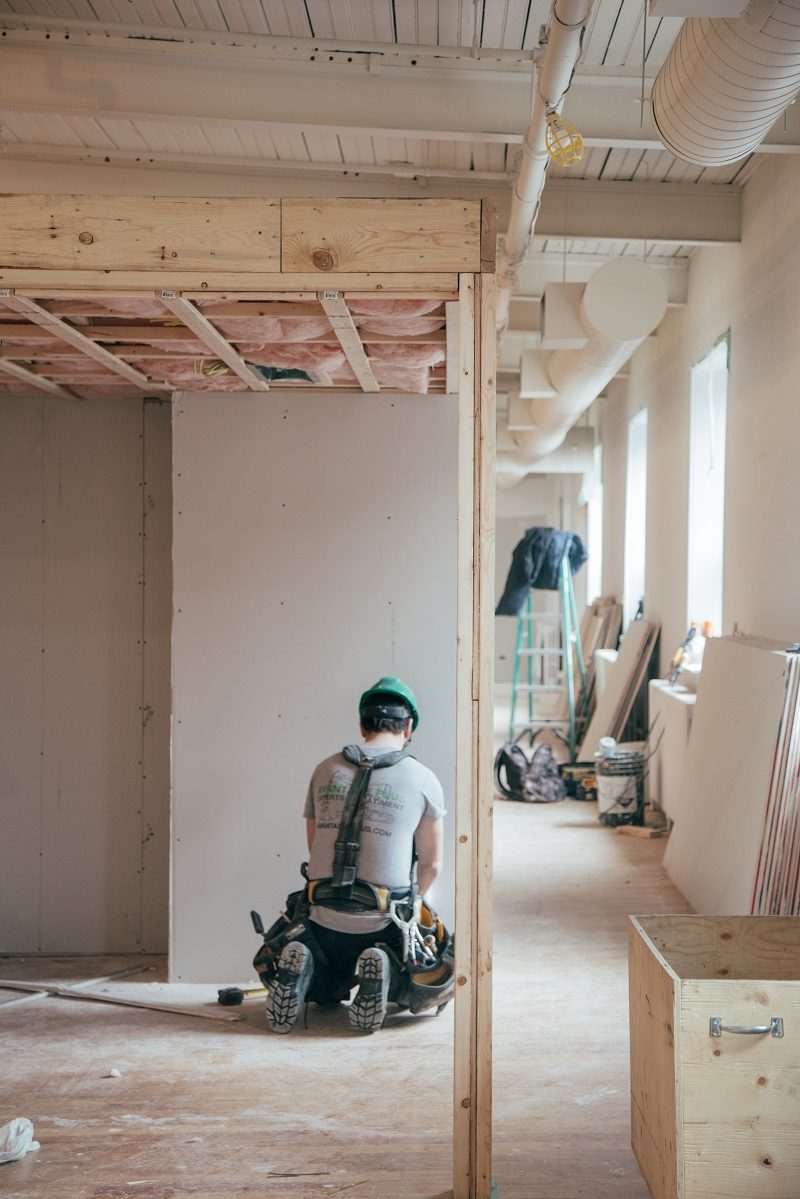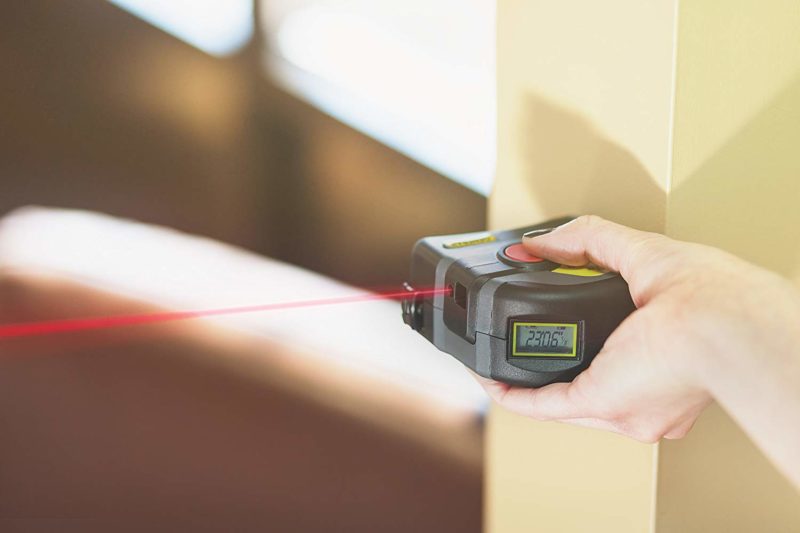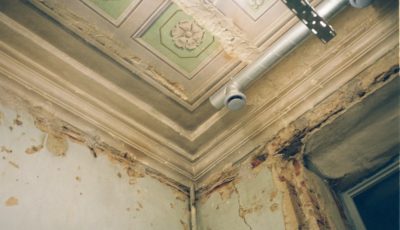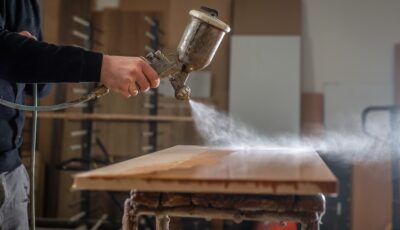5 Advantages Of Using A Laser Tape Measure
When it comes to any manual job, construction, or even basic house work, measurements are the key to doing them right. The tools at your disposal have a direct influence on how well you can produce an outcome or product. They’re the cornerstone of all science and calculations in the world around us. When it comes to the instruments you choose, they’re put to the test in two major categories: accuracy and precision. In the realm of measuring macroscopic distances, using a tape measure if the primary tool. This basic means of data is in every toolbox and every tool belt the world over. But in this day and age, sometimes the trusty tape measure just won’t cut it. When it comes to consistent accuracy and precision with minimal user interference, using a laser tape measure is the best way to get the job done. They’re fast replacing old and used rigid models due to their consistency on the field and their extremely wide application.
Here are 5 advantages of using a laser tape measure over the old spring returns.
They’re the most accurate measuring tools
Most laser tape measures are accurate within 3 millimeters, all the way up to 92 meters in terms of distance, and 198 meters in terms of height. Some have an even wider range. They’re the obvious choice for larger distances and only require a user to choose a setting, point, and click. The result will be right there on the display. You can even choose the units and toggle between them so that there’s absolutely no chance of misreading.
It takes a fraction of the time one would spend using a classic spring return, or dusting off the measuring wheel and walking the length you have to measure. There’s no estimation when using a laser measure to obtain data. This way, your numbers are as close to the actual concrete distance as technologically possible. This is done by a few methods depending on the model you choose. All of them shoot out a laser and read out numbers based on the beam’s feedback, but the internal calculations might differ slightly. One method is called phase-shift, in which the laser hits an object and the length of the beam is compared to an internal control of its own reflection. The second method is called time-of-flight, which measures the amount of time it takes for the beam to hit an object and return to the source.
They have multiple calculation functions
Laser tape measures have their own internal calculators and can do an array of complex number crunching, much like a graphing calculator can. Most models can solve for the area, provided you take two measurements, volume with three measurements, and even fill in the gaps in incomplete height measurements. The third option is done by using the Pythagorean theorem upon entering the base measurement and the distance between you and the highest point of an object, also serving as your hypotenuse. Along with these calculations, most models have a stake out feature. This takes your measurements and allows you to divide it into your choice of equidistant points. This is perfect for if you’re setting up fence posts or driving in equally dispersed nails. This saves you a whole bunch of time writing down the individual numbers and risking miscalculations. You can have clear and concise answers right there in front of you as you work, and confidently move on to the next phase of your project.
You can store previous work
Laser tape measures also have their own system memory. On newer models, you can work with up to ten of your past calculations or measurements and have them at hand at any given time. They’re perfect for when you have to figure the layout of a given space based off of the objects in it, or are planning out what to do to maximize utilization of an object. Having that flexibility ensures that even if you forget something, you can always go back and fill in the missing gaps in your numbers. We’ve all been in projects where we have to repeatedly go back just to make sure we have the accurate figure. This completely eliminates that.
In-Field features
Arguably the greatest feature of modern laser tape measures is the ability to send information directly to your mobile device via Bluetooth. The newer models have a compatible app that plugs in everything you measure down a list. There’s no more writing, no more bad handwriting, and no more losing sheets. It’s all in your phone now. On top of that, you can edit and convert it to a PDF right in your app. You can send out accurate measurements to bosses, contractors, and anybody else involved in the project that you’re working on. Some allow you to take pictures and add them to the PDFs you create. Imagine having to bypass playing telephone all day and just presenting the raw data and the corresponding image. That’s hours saved on meetings, typing, and double checking. This is perfect for project managers that have to send updates constantly while on the field.
Cost effective
With a laser tape measure, you can essentially be a one man team. You can eliminate the need for another person on the other end of a physical tape measure as well as any other assistant. In the end, this means good things for your budget. If you have a tripod you can eliminate the only variable between you and a distant point: jittery hands. With these tools you can survey an entire area and send in your findings, way quicker than through conventional means.
Owning a tape measure is definitely a sound investment. If you’re a plumber, an architect, or contractor, it serves as your basis for virtually everything. Measurements dictate cost, manpower, time, and effort down the line. One may lament about the cost. But when you come to think about it, all the savings you rack up with teams or people and multiple tools completely even that out. They’re easy to carry, simple to operate, and pay for themselves in a much shorter time than expected. They truly are the best out on the market.

